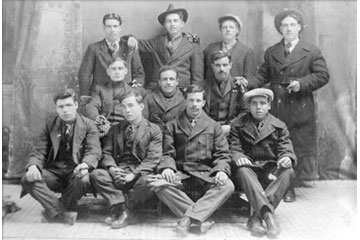
American people
Pioneer emigrants to the US before the ‘crisis of 29’. The photo is taken in Bridgeport, Conn, and it shows: (top line) Francisco ‘Vinater’, José María ‘Llana’, Toni Moncho, Joaquín Palacio, (middle line) XXXX, Joaquín de Teresa, Sebastià ‘Vinater’, (bottom line) ‘Peña’, XXXX, XXXX and ‘el Moreno’.
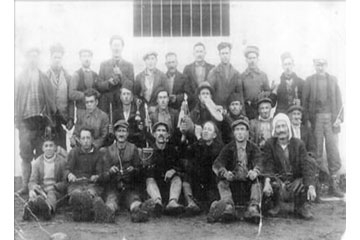
pruners
Group of pruners with their work tools in the annual seasonal emigration to the lands of Algeria. The young women made the same temporary emigration to work in the rich French ‘fermas’ to ‘make themselves trousseau’ and get married. The independence of Algeria ended this migratory flow that was diverted to the countries of the European Union, especially France and Germany.
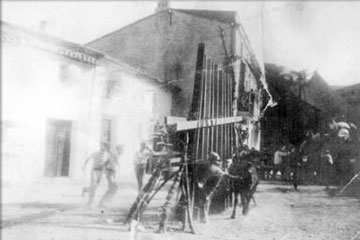
La ratera
‘La ratera’, in the center of the town square, and the heifer place us in the celebration of ‘bous de carrer’ that was celebrated on the feast of San Miguel, in September. Casa Candela and the houses’ del raconet ‘, on the left, as well as the young men running, remind us of the times of’ Laurencia està plorant … ‘, of the fucking of Paco’ el Chorro ‘, of’ el Puret fa la maneta i Cabellet el peuet i Amparito is looking at them in their ullets blavets’.
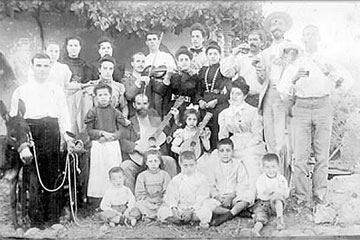
Riu Rau
It is one of the oldest photos of a group of people from Murla in the Riu-Rau of Juanito Planes. Among others, the owner of the house is identified with his donkey and, next to him, Consolación de Llauís, Uncle Santiago, playing the guitar and, behind him, Salvaoret ‘del Notari’ with his violin. Next to him ‘les senyoretes’ and Uncle Constantino pouring themselves a drink.
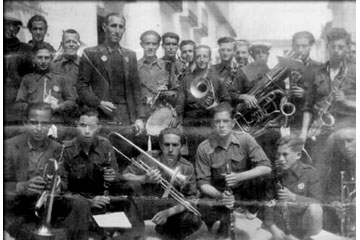
Municipal Band
La Unión Musical Murlense at the times of Pascual Pons’s direction.
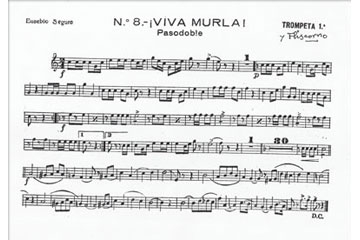
Pasodoble Viva Murla
The pasodoble ‘Viva Murla’ was composed by the then director of the music band ‘Unión Musical Murlense’, the Swede Eusebio Segura. It was published in some booklets of dance pieces entitled “Lilies and camelias” of which we keep some originals. The teacher Amparo Navarro wrote it in the thirties of last century.
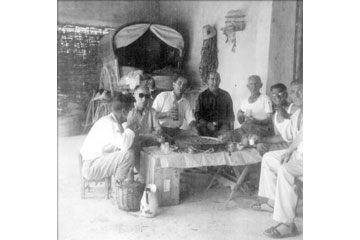
De paella
‘Anar de paella’ is a ritual of preparation, fun, camaraderie and conviviality throughout the day. In this case, Juanito Planes, Miguelet de Toni Moncho, Juanito ‘Llana’, Joaquín, Fernando ‘la Ginera’, Juanito ‘Lelo’ and Pepe ‘La Ginera’ are the protagonists, as well as the ‘marraixa del vi’ and the ‘ Picher ‘of fresh water for’ La Candela ‘of the first term.
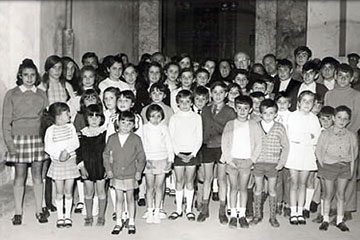
children
The pastoral visit of Archbishop José María García Lahiguera, in the sixties of last century, was the reason for this photo in which all the children of the two schools appear, that of Don Antonio and that of Doña Matilde, which also appear in the photo. Together with the archbishop we can see Don Miguel, the parish priest, and Tonica Pepa Tona; and at the extremes, Salvaoret from ‘Mandana’ and Pepica la‘ Vinatera ’.
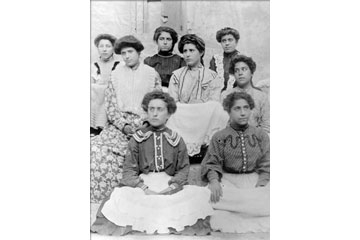
young people
It is one of the first photos of young people from Murla. The negative, a glass plaque from a collection that Salvaoret ‘del Notari’ took about 1890, presents us from left to right Paquita ‘Tassio’, Elisa, Aunt Emilia, Laurencia, Aunt Sofía and Antonieta; and, in the first place, Amparo ‘la Pura’ and Auroreta ‘Desideria’.
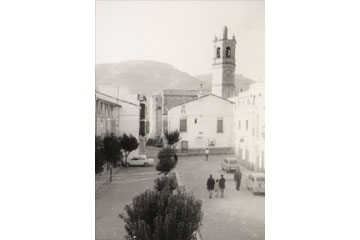
The square and the bell
Murla’s bell tower was neoclassical in style. The initial project was by the Alicante architect Martín de Martín, but the town did not like it due to its reduced height and the direction of the work was entrusted to the ‘frare Maseo Company’, a master builder of the Franciscan order who had worked in the Purísima Xiqueta de Benisa and many other churches of the order. The works were completed in 1909. Its fall, on May 1, 1990, is explained by the weakness of the base on which it was based, one of the two towers of Pop Castle. (Photo: D. Sala).
The Plaza de Murla in the sixties of the last century. The urban trees, the ‘six hundred’ by Mari Carmen ‘la Barbera’, the ‘Rajolat’ notice board and the Parish Cinema poster board, they tell us. (Walking, Chelo, Paqui and Rosa Mari)
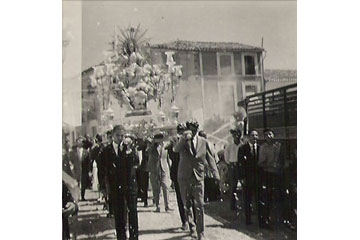
Divina Aurora
The procession of the Divine Aurora, on the night of August 5, is one of the greatest solemnities of the Patron Saint Festivities. The new image of the Patron, carried on the shoulders of ‘el Moreno Barber’, Fernando ‘Muchacho’, Crespo and Juan de Fernandet, at the front of the litter, was paid for mostly by murleros resident in the United States and came to replace the image of the Aurora ‘Alcoiana’ that after the war was donated by an aunt of Remedios ‘la Alcoiana’. The first image of the Aurora, the work of the sculptor Esteve, from 1857, was burned in the years of the civil war.
In the photo we can see the transfer of the image of the Patron from her dressing room, in the hermitage of ‘La Sangre’, to the parish temple for the celebration of Holy Mass on the morning of August 5, feast of the Divine Aurora.
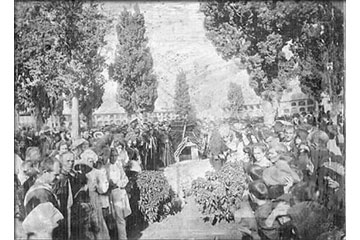
Padre Vives
Transfer of the remains of the former provincial father of the Franciscan order, ‘Mossén Miquel’, Brother Miguel Sirera Pastor, OFM, from the Pego parish cemetery to the town church, with the attendance of a crowd that professed great devotion to him. Your Holiness. He was the great reformer of Franciscan piety in the early 20th century.
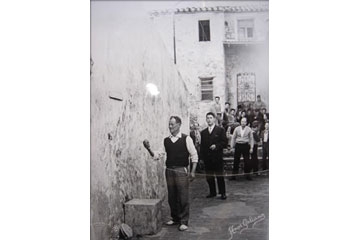
Trinquet de la Canyera
The ‘Trinquet de la Canyera’ was at the back of his bar, located on Calle de San José. It was a ‘trinquet de pilota grossa’, where they played with balls made by hand, like ‘les galochetes de Monóver’. There were two other ratchets at the Tonet de Canera house and at the Tonet del Reixo house. In the photo, the Galiana Brothers, from Callosa: Leocadio ‘Cabello’, Fernando, Fernandet de Candelaria; in the background, Teodoret, Paco ‘Marí’ and other spectators.

